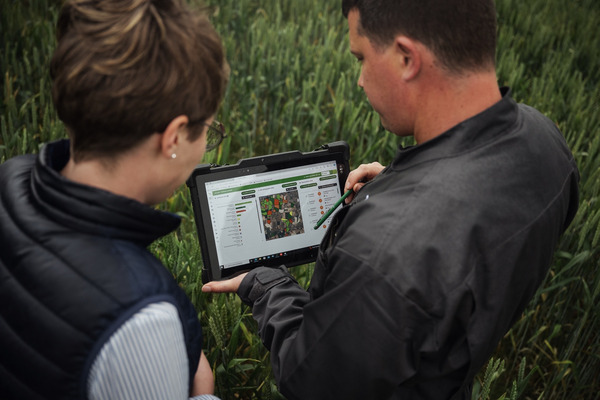1. Can you briefly introduce yourself and your farm? How long have you been a farmer and what type of crops or livestock do you raise? Can you describe the size and structure of your farm?
Hello, my name is David M., I am 48 years old. I am a farmer on 80 hectares in Maine-et-Loire. I have been farming for 14 years, following my parents' footsteps. I am a 100% crop farmer: soft winter wheat, durum wheat, rapeseed, grain corn, field beans and alfalfa seed production.
2. What guided you to adopt digital technologies in your farming practices? Was there a particular moment or challenge that led you to this decision?
New technologies have been gradually developed in our production systems and regions over many years. For example, my parents have been using computerised fertiliser planning software on the farm for over 25 years, in conjunction with the cooperative's crop advisors. Regulations have sometimes driven the process, particularly the CAP and the establishment of vulnerable areas. Fertiliser plans very quickly became a regulatory requirement, and computers soon replaced paper charts. It was also the issue of food traceability, through contract farming, that prompted us to gradually move from paper to computers and then to smartphones.
3. What specific digital technologies or tools do you currently use on your farm (e.g. precision farming tools, connected devices, drones, sensors, etc.)?
My tractor is equipped with GPS guidance. I mainly use GPS for tilling, sowing, fertilising and spraying pesticides I use DSSs on the farm, managed with the cooperative: Farmstar (satellite monitoring of nitrogen requirements for wheat and rapeseed), FongiPro (top fungicide for cereals). I track all my operations on my smartphone, now almost 100% when I leave my field. I am also equipped with a Weenat connected weather station. My neighbours are also starting to use them.
4. Could you give an example of how these digital tools are used in your daily operations? What are the most significant benefits you have gained from using digital technologies in your business (e.g. increased efficiency, reduced environmental impact, better decision-making)?
I don't live on my farm. The connected station allows me to monitor rainfall on my farm in real time. For example, yesterday, at my home, 7 km away, I only received 2 mm of rain. On my farm, 7/8 mm fell, enough for me to decide to cancel a spraying job I had planned to do this morning. It saves me a huge amount of time and also improves the quality of my work.
5. Have you encountered any difficulties in implementing or using digital technologies in your business? If so, what were they and how did you overcome them (if applicable)?
I haven't encountered any particular difficulties, assuming that these solutions are operational. We did experience some major IT and Internet problems in the early years (2005-2015), but at the moment, the distribution network is efficient. I feel sufficiently trained and comfortable with these tools, when they are user-friendly. What is holding back their adoption is the return on investment: my farm is still small. I need to replace my sprayer. I requested a quote for a model equipped with section control: this technology greatly improves spraying accuracy. But it would cost me €47,000! I cannot afford to absorb an additional cost of at least €20,000–25,000 compared to a standard model.

 tap and then scroll down to the Add to Home Screen command.
tap and then scroll down to the Add to Home Screen command.